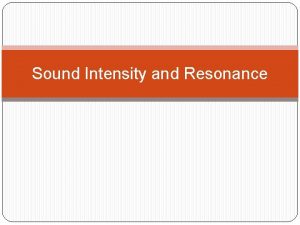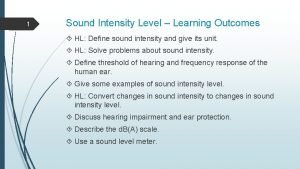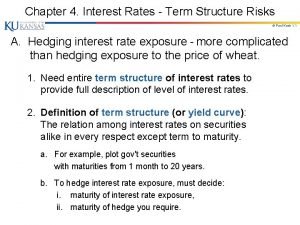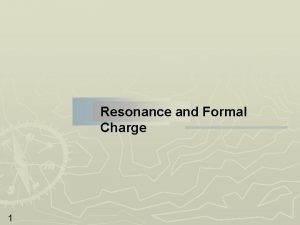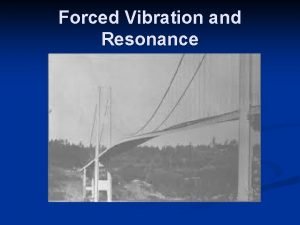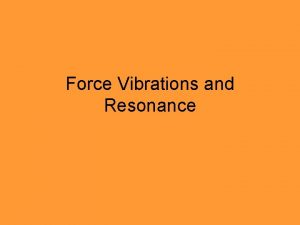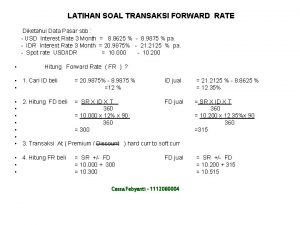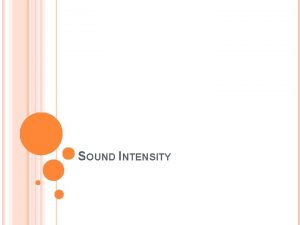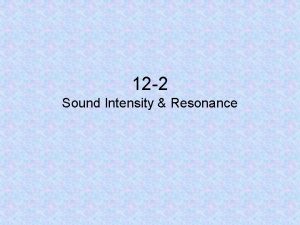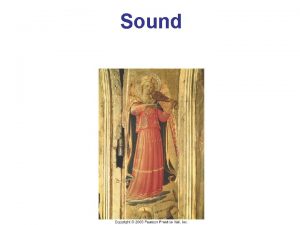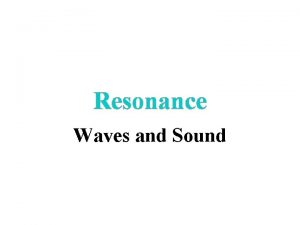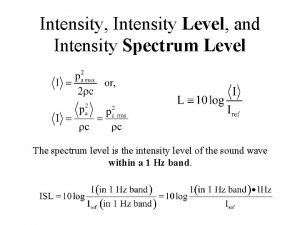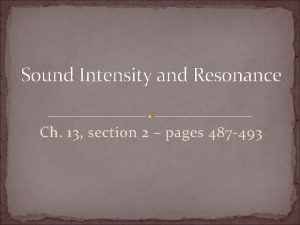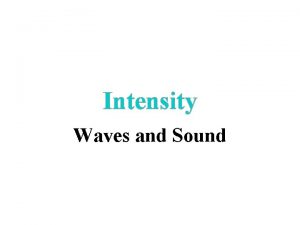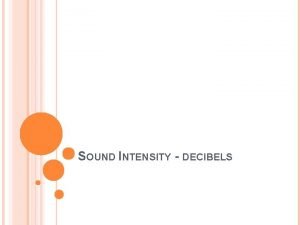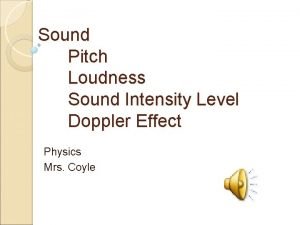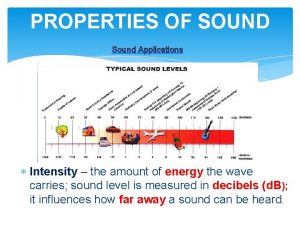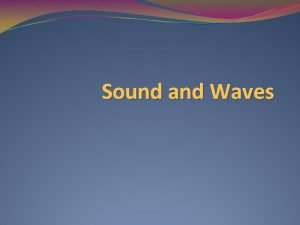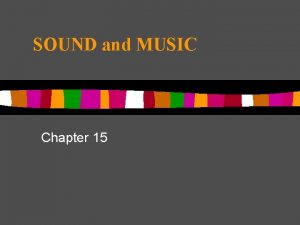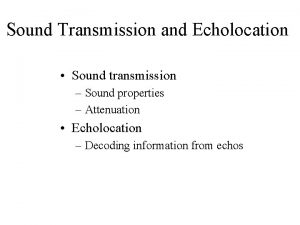Sound Intensity and Resonance Intensity the rate at



















- Slides: 19

Sound Intensity and Resonance

• Intensity – the rate at which energy flows through a unit of area perpendicular to the direction of wave motion. • Intensity is essentially the power of the wave.

• Intensity and frequency determine which sounds are audible. • Humans hear 20 to 20, 000 Hz. • The softest sound a human can hear is at a frequency of 1000 Hz and an intensity of 1 x 10 -12 and is called the threshold of hearing. • The loudest sound a human can tolerate has an intensity of 1 and is known as the threshold of pain.

• Relative intensity is measured in decibels. • The intensity of a wave determines the loudness. • Relative intensity is the human perception of loudness. • The decibel is a dimensionless unit. • A difference in 10 db means the sound is twice as loud.


• When an isolated guitar string is held tight and plucked, hardly any sound is heard. • When the same string is placed on a guitar and plucked, the intensity of the sound increases dramatically. This is called forced resonance. • The vibrating of the strings of a guitar force the bridge of the guitar to vibrate. • The forced vibrations are called sympathetic vibrations.

• All objects have natural frequencies. • Every object will vibrate at a certain frequency. • Resonance – a condition that exists when the frequency of a force applied to a system matches the natural frequency of vibration of the system.

• Example 1 – Tacoma Narrows bridge. The wind blowing through the canyon matched the natural frequency of the bridge and caused the bridge to oscillate and eventually crumble.


• Example 2 • A kid on a swing, pumps their legs at the same frequency each time to cause them to swing higher each time. They are matching the natural frequency of the swing.

Example 3 • A wine glass has a natural frequency. • A singer can sing at the same frequency and cause the glass to vibrate until it shatters.

Harmonics

• The fundamental frequency is the lowest possible frequency of a standing wave. • The series of frequencies of a standing wave are called the harmonic series.

• Frequency = harmonic number x (speed / 2 Length) • f = n (v/2 L)

• When a guitar player presses down on a guitar string at any point, that point becomes a node and only a portion of the string vibrates. • As a result, a single string can be used to create a variety of fundamental frequencies. • L in the previous equation would represent the portion of the string that was vibrating.

• Standing waves can also be set up in a tube of air and not just on a string. • Harmonic series of a pipe if both ends are open is different on a pipe if only one end is open.

• Both ends open: • Frequency = harmonic number x (speed/2 L) • f = n(v/2 L) • One end is closed: • Frequency = harmonic number x (speed/4 L) • f = n(v/4 L)

• In music, the mixture of harmonics that produces the characteristic sound of an instrument is referred to as the spectrum of sound, which results in a response in the listener called sound quality or timbre.

• When two waves of the same frequency interact, you get either constructive or destructive interference. • If waves are opposite to each other they are said to be out of phase and destructive interference occurs. No sound is heard. • If waves match up it is in phase and constructive interference occurs. The sound gets louder • However, if waves with slightly different frequencies interact, a variation creates a soft to loud sound called beat.
 Sound intensity and resonance
Sound intensity and resonance Solid liquid gas
Solid liquid gas Sound intensity
Sound intensity Electromagnetic waves vocabulary
Electromagnetic waves vocabulary 73 decibels
73 decibels “a sound mind is in a sound body”
“a sound mind is in a sound body” Real vs nominal interest rate
Real vs nominal interest rate Relative growth rates
Relative growth rates Bond equivalent yield
Bond equivalent yield Spot rate and forward rate
Spot rate and forward rate Difference between rate and unit rate
Difference between rate and unit rate Formal charge nco-
Formal charge nco- Forced vibration and resonance
Forced vibration and resonance Half open pipe
Half open pipe Forced vibration and resonance
Forced vibration and resonance Brand judgement meaning
Brand judgement meaning The brand value chain
The brand value chain Electron delocalization and resonance
Electron delocalization and resonance Cap rate interest rate relationship
Cap rate interest rate relationship Contoh transaksi forward
Contoh transaksi forward
